link to page 2 link to page 2 link to page 2 link to page 3 link to page 3 link to page 4 link to page 4 link to page 4 link to page 4 link to page 5 link to page 5 link to page 5 link to page 6 link to page 7 link to page 9 link to page 9 link to page 9 link to page 9

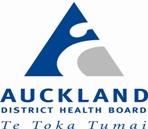
If printed, this document is only valid for the day of printing.
Restraint use in DCCM
Document Type
Policy
Function
Clinical Practice
Directorate(s)
Adult Medical Services
Department(s) affected
Department of Critical Care Medicine (DCCM)
Applicable for which patients, clients Adult DCCM patients
or residents?
Applicable for which staff members? DCCM clinicians
Key words (not part of title)
n/a
Author – role only
Nurse Specialist DCCM
Owner (see
ownership structure)
Nurse Advisor DCCM
Edited by
Clinical Policy Advisor
Date first published
July 2003
Date this version published
December 2015
Review frequency
3 yearly
Unique Identifier
PP2017/RBP/046
Contents 1.
Purpose of policy 2.
Scope
3.
Definition 4.
Indications for use, training, safety and assessment
5. Restraint methods
a.
Key considerations
b.
Mattress on the floor
c.
Padded Bedrails
d.
Wrist Restraint
e.
Nurse constant
f.
Four point restraint
g.
Sedation h.
Code Orange
6.
Documentation and evaluation
7.
Restraint classification tool
8.
Legislation
9.
Associated Auckland DHB documents 10.
Disclaimer
11.
Corrections and amendments
Restraint use in DCCM 2015-12-17.docx
Page 1 of 9


If printed, this document is only valid for the day of printing.
1. Purpose of policy
This policy guides the safe use of restraint with critically ill patients to ensure Department of
Critical Care Medicine / HDU staff practice within legislative framework of applied restraint.
To ensure that DCCM/ HDU staff are safe while caring for non-compliant patients because of
physiological dysfunction.
Back to Contents
2. Scope
All staff caring for patients who may require to be restrained while receiving intensive
therapies within DCCM/HDU.
Back to Contents
3. Definition
Restraint: is the implementation of any forcible control that limits the actions of the
consumer in circumstances in which the consumer is at risk of injury and /or of injuring other
person. Intentionally removes a consumer’s normal rights to freedom
Back to Contents
Restraint use in DCCM 2015-12-17.docx
Page 2 of 9

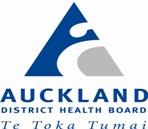
If printed, this document is only valid for the day of printing.
4. Indications for use, training, safety and assessment
Indications for use of restraint
The decision to restrain a patient in DCCM/HDU is the joint responsibility of the Nurse
assigned to the patient and/or Intensivist on duty.
Restraint in DCCM/ HDU is for patients with behaviour that is combative, confused,
disorientated or violent. This behaviour is a result of physiological dysfunction of a range
of systems, or from pharmacological therapies.
Restraint is required to keep the patient safe while intensive therapies are administered.
Staff Training
Patients are assessed
three times a day by an Intensivist on the ward rounds.
Registrar cover is rostered over a 24 hour period within the department.
Medical staff document key treatment concepts on the ‘Plan of the day’
Nursing staff assess and document the patient’s risk of falling, violent behaviour,
disorientation and self-harm at the
commencement of each shift on the DCCM Initial
Shift Assessment form/ care plan CR4771, HDU Initial Shift Assessment form/ care plan
CR2474 and includes the documenting of restraint interventions for safe practice and
family teaching.
This assessment is undertaken in relation to the disease process and physiological
abnormalities. Ongoing half hourly monitoring and documentation of -assessment is
completed on the 24 hour chart CR5710 e.g. of skin integrity of the limbs where
restraints are applied .
Incidence of restraint use is also documented on DCCM Nursing History Form CR3605 and
in clinical notes for monitoring purposes.
Back to Contents
5. Restraint methods
a. Key considerations
At all times the
safety, dignity and autonomy of the patient is a prime consideration.
However, at no time should staff and other patients have their safety compromised
If the situation /environment becomes
unsafe, emergency assistance (i.e. “Now
Call” must be activated as soon as possible however if the patient is too aggressive
for intervention a Code Orange must be called
Appropriate and timely communication with the patient, family/Whanau must occur.
Documented on the initial assessment / care plan CR4771 and Nursing History form
CR3605
Communication with the family must ensure that they understand the need for
intervention and that they have received all the information that they require
If valuables/taonga/ items of cultural, religious significance are removed during
restraint for the safety of the patient, this must be done as per ADHB valuables
policy.
Restraint use in DCCM 2015-12-17.docx
Page 3 of 9

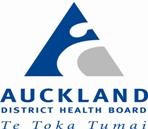
If printed, this document is only valid for the day of printing.
Back to Contents
b. Mattress on the floor
Patients may be assessed for placement on their mattress on the floor to allow maximum
freedom for restless disorientated behaviour without the risk of falling.
For this to be an option, the patient requires to be able to support his/her own airway
and breathing.
Back to Contents
c. Padded Bedrails
These are applied to the bed of any restless patients who are at risk of hurting themselves
through restless behaviour. They may also be used in conjunction with other measures.
Back to Contents
d. Wrist Restraint
The decision to apply restraint is the responsibility of the RN caring for the patient.
‘Gordon’ wrist restraints are to be applied to patients who are at risk of pulling out vital
invasive lines.
Only the approved wrist restraints are to be applied to patients. These must be applied
and tied in the correct way without impeding circulation to the hand along with correct
and comfortable limb alignment.
When wrist restraints are used the following documenting must occur:
-
Date and time applied and withdrawn on 24 hour chart.
-
Family was informed of restraint application.
Any other factors associated with the decision making or any negative outcomes from the
use of restraint e.g. skin tear.
Back to Contents
e. Nurse constant
This staff allocation category is prescribed by the medical staff on the DCCM/ HDU
detailed Order Sheet when vascular lines or airway removal is life threatening to the
patient (patient may have a grossly swollen airway or line limitation). This category means
that the patient is never to be without a nurse in direct attendance.
Back to Contents
Restraint use in DCCM 2015-12-17.docx
Page 4 of 9

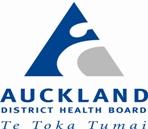
If printed, this document is only valid for the day of printing.
f. Four point restraint
To be applied to patients who are demonstrating violent behaviour towards others
(kicking).
On assessment document clinical risk, date, time, when families were informed of the
need for restraint and when restraint was withdrawn. A Risk Monitor pro and Restraint
Monitoring Form must be completed along with the other DCCM restraint documentation
forms. Audit: POST INCIDENT REVIEW Form /DD3097FOLLOWING RESTRAINT
form on
intranet.
The completed Post Incident Review forms to be used by the local restraint coordinator
for review of practices and discussion at service quality group level, copy to be sent to the
Quality Manager.
Back to Contents
g. Sedation
Sedation is prescribed by the Intensivist to allow intensive therapies to be administered
safely.
Medical staff will assess and review sedation regularly (8 hourly) or more frequently.
Back to Contents
h. Code Orange
When a patient’s behaviour poses an immediate risk to the safety of self or others, and
cannot be managed by other proved methods, a Code Orange may need to be called.
If Code Orange is called for a patient this is documented in the patient’s clinical record –
present situation and outcome, and an event notification form completed. A Risk Monitor
Pro must also be completed and the post audit document be completed.
Back to Contents
Restraint use in DCCM 2015-12-17.docx
Page 5 of 9

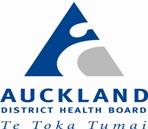
If printed, this document is only valid for the day of printing.
6. Documentation and evaluation
Documentation Requirements
The
Restraint Classification Tool provides guidelines on when an event notification form
must be completed.
Evaluation and Review
DCCM follow-up program collects information on patient’s memories of restraint for
audit purposes
Restraint use is reviewed at the monthly DCCM Nursing Focus Group.
Six monthly audits of restraint usage must be sent to the Restraint Reduction Group by the
restraint coordinator. DCCM documentation audits are completed three monthly capturing
restraint documentation on the Initial Shift Assessment Form, Nursing Care Plan, Patient
History and Nursing Documentation Form, 24-hour chart and Clinical notes. The number of
patients restrained in DCCM/ HDU is captured from the 24-hour chart documentation.
Reviewed by Restraint coordinator for DCCM LIV
Back to Contents
Restraint use in DCCM 2015-12-17.docx
Page 6 of 9


If printed, this document is only valid for the day of printing.
7. Restraint classification tool
Type of Restraint
Usage
Application
Monitoring
DOCUMENTATION
Used
Mattress on the floor For patients who can
Head injured patients rousing
Ability to migrate off the
Level of restless
protect their own airway
from unconsciousness or patients
mattress
Physiological changes
and gas exchange and are delirious from other
Privacy
Restraint form
very restless
pathophysiology
Escalating distress
Padded bedrails
Prevent pt from injury
Ensuring safe environment for
Check appropriateness
Level of restless and
from bed rails and risk of
the patient and preventing injury if pt is confused and at risk
physiological changes
fall
of climbing out of bed
Initial Shift assessment/
Ensure rails secure
Nursing Care Plan
Nurse constant
Prescribed by medical
For patients whose invasive
Monitor adequacy of
Responsiveness
staff to ensure that a
therapies are absolutely life
sedation therapy
Application of restraint
critical care nurse is
threatening if removed (e.g.
Wrist or four point restraint
Family informed
always with the patient
swollen airway)
Four point restraint
Responsibility of bed side
For violent patients with
Observe and document
Document on Initial Shift
nurse to prevent staff
deranged pathophysiology who
behaviour
Assessment/ Nursing Care
injury
use their legs as weapons against
Physiological changes
Plan CR4771, Clinical Record,
health professionals
Sedation
Risk Monitor Pro
Nursing History Form CR3605
Restraint Monitoring Form
Restraint Post Evaluation
Form
Wrist Restraint
To retain invasive
Patients who have the potential
Correct application
Document on Initial Shift
therapies
to remove invasive intensive
Skin integrity
Assessment / Nursing Care
therapies
Plan CR4771 , Clinical Record
and Nursing History Form
Restraint use in DCCM 2015-12-17.docx
Page 7 of 9

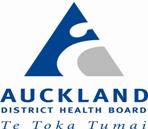
If printed, this document is only valid for the day of printing.
CR3605 24 hour chart
Sedation
Prescription by intensivist Patients with deranged
Sedation level
Physiological signs
pathophysiology that requires
Physiological changes
and responses
control while therapy is
administered
Code Orange
For out of control physical For patients or families
Risk
Document in clinical record
behaviour where staff are
Escalation
Restraint Monitoring Form,
at risk
De-escalation
Risk Monitor Pro Restraint
Resolution
Post Evaluation
Back to Contents
Restraint use in DCCM 2015-12-17.docx
Page 8 of 9

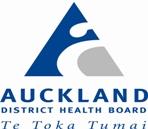
If printed, this document is only valid for the day of printing.
8. Legislation
NZ Bill of Rights
Code of Health and Disability Services
Consumer Rights (1996)
Mental Health (compulsory Assessment and Treatment) Act 1992 and Amendment Act
1999
Crimes Act 1961
Back to Contents
9. Associated Auckland DHB documents
Board Policy Manual
Bicultural Policy
Behaviours of Concern (BoC) - Patient Observation
Informed Consent
Restraint Minimisation & Safe Practice
Valuables, Property & Taonga
NZ Standard
8141:2001 Restraint Minimisation and Safe Practice
DCCM
DCCM Nursing Documentation
Back to Contents
10. Disclaimer
No guideline can cover all variations required for specific circumstances. It is the responsibility
of the health care practitioners using this ADHB guideline to adapt it for safe use within their
own institution, recognise the need for specialist help, and call for it without delay, when an
individual patient falls outside of the boundaries of this guideline.
Back to Contents
11. Corrections and amendments
The next scheduled review of this document is as per the document classification table (page
1). However, if the reader notices any errors or believes that the document should be
reviewed
before the scheduled date, they should contact the owner or th
e Clinical Policy
Advisor without delay.
Back to Contents
Restraint use in DCCM 2015-12-17.docx
Page 9 of 9

















